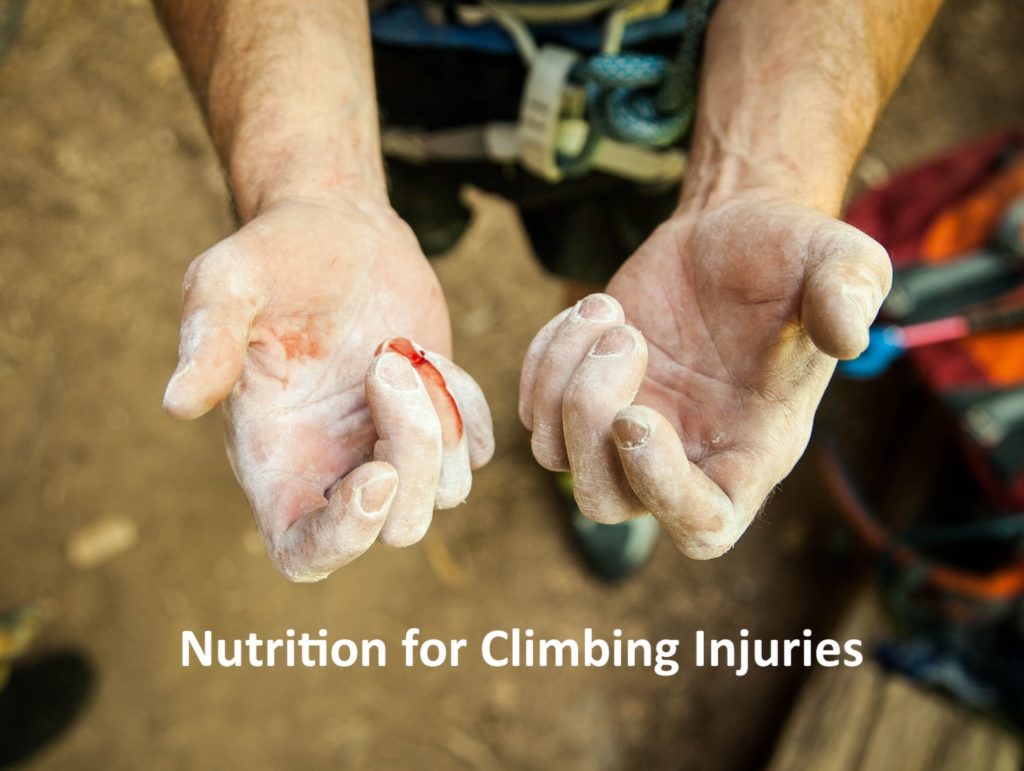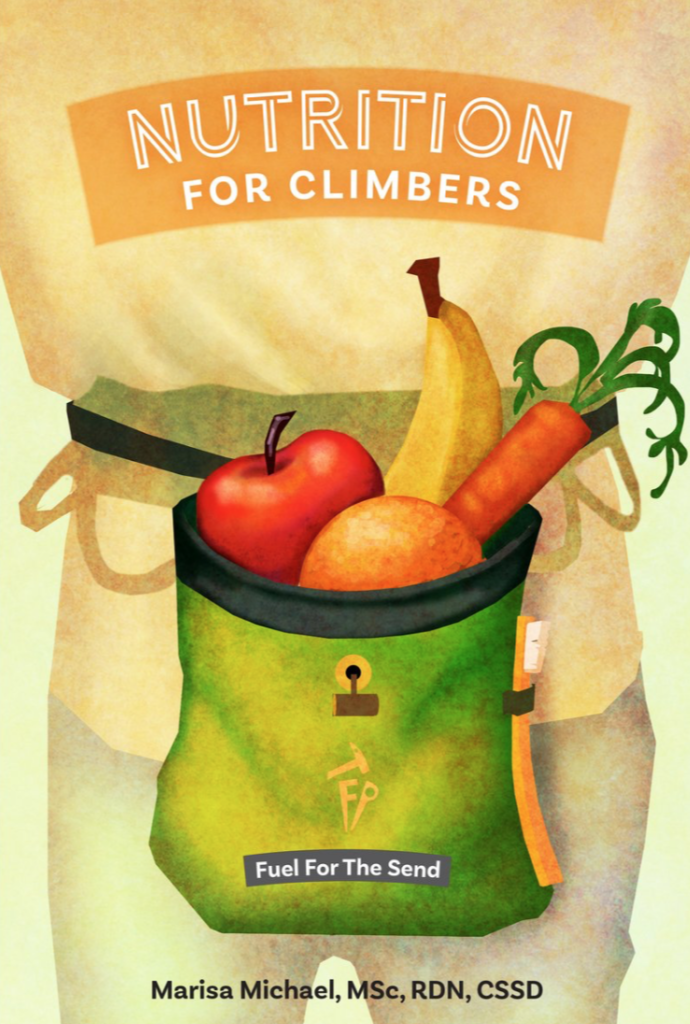
Injury is a word that will make any athlete cringe. For tips and tricks to prevent injury, check our other post on nutrition for injury prevention.
People who live to move aren’t necessarily receptive to the notion of rest and recovery. In addition to being told to stay sedentary, the recommendation to also increase your caloric intake in order to help healing can be scary.
The reality is that proper nutrition can help to aid in the recovery process and is a component to recovery that can’t be overlooked. The road to recovery won’t be all daffodils and roses, but eating oranges and strawberries might help to make it a bit sweeter.
Colorful foods are rich in antioxidants (Skittles excluded). These help fight the inflammation that results from an injury. Protein-rich foods are the other broad nutrient category to make sure you are getting enough of. Protein and anti-inflammatory foods should be on every grocery list while you are resting up and on the road to recovery.
Protein for injury recovery
Protein plays a role in rebuilding muscle and bones, building red blood cells, healing wounds and keeping your immunity up.
- Eat at least 20 g of protein at every meal to help your body heal.
- Protein rich foods include: yogurt, eggs, salmon, chicken, beef and soy products.
- Meal plan ideas: Quinoa with chicken and vegetables, oatmeal with a fried egg on top, Yogurt with nuts and berries.
Nutrition for inflammation
Injury creates inflammation in the body. At first, this is great because the acute inflammation is a crucial body process to heal the site of injury. However, you want to combat long-term (chronic) inflammation by eating foods rich in antioxidants.
- Aim to consume 2-6 g of omega-3’s a day.
- Foods like fruits, vegetables, whole grains and foods rich in omega-3’s like fatty fish, walnuts and flaxseed are all anti-inflammatory
- Meal plan ideas: Bowl of berries with walnuts, Rice and vegetables with salmon.
Nutrition for Tendon and Ligament Injury
Tendons are a type of soft tissue in the body that don’t receive blood flow. This means it takes movement to squeeze the nutrients into the area, like a sponge releases water. Therefore, you want to supplement 30-60 minutes before exercise to ensure the environment around the injury is saturated, because blood is not available to carry the nutrient directly to the soft tissue damage site and instead requires movement to get it there.
To help strengthen your tendons:
- Take 5 g gelatin (collagen supplement) with 500 mg of Vitamin C. (or 20 g of hydrolyzed collagen powder). Vitamin C is required to make collagen and is required to ensure the gelatin is utilized in the body at the injury site.
- Injury prevention note: t’s important to take the collagen + vitamin C before a training session that may produce load on the tendon or ligament. This load, combined with the collagen and vitamin C, helps stimulate growth, creating a thicker, stronger, and more elastic tendon or ligament.
Nutrition for Muscle Injury
Muscles are completely different tissues than tendons and ligaments, so you’ll need a different approach when recovering from a muscle injury. Creatine has been linked to muscle growth, repair and development. Creatine helps with energy production and helps muscle cells communicate with one another. Creatine, found naturally in muscle cells, has proven to be an effective supplement when recovering from muscle injury.
Your body will absorb water along with creatine and will contribute to some water weight gain. In general, while recovering from an injury, it might be mentally best to avoid the scale so you can properly nurture your body.
To help recover from muscle damage:
- Take 10 g per day of creatine for the first 3 weeks following the injury. Then drop this down to 2 g per day after that for maintenance of the muscle tissues.
- Note: there is some research that indicates creatine may help with injury, but it’s still being studied. If you want to try it, go for it. Creatine is safe to consume. If you have existing kidney disease, check with your nephrologist first.
- Check out our other blog post for foods that promote muscle strength and recovery.
Nutrition for Bone Injury
Bone breaks in climbing are often the result of some gnarly falls that can take place on or off the wall. (A few Weekend Whipper submissions likely ended with fractured bones. Yikes!) Vit D and Calcium work together to promote bone health. Vitamin D is required to properly absorb Calcium. Dairy products, rich in calcium, are often fortified with Vitamin D making them a great nutritional bang for your buck (and bones). Consider low fat milks and read the label to ensure both Vitamin D and Calcium are present.
To help strengthen a fractured bone:
- Meet the Recommended Daily Allowance (RDA) for these nutrients. 1,000 mg of Calcium and 600 IU of Vitamin D are recommended for most adults although this may vary depending on your stage in the life cycle.
- Eat adequate calories. Your body needs this fuel to rebuild bone tissue.
- Protein is also important for bone healing.
While recovering from any injury read the daily values on the back of a nutrition label to make sure you meet 100% each day of Vitamin C, Zinc, Calcium and Vitamin D. These vitamins will help nurture the body while it heals. You can supplement with creatine for muscle strains or collagen for tendon injuries to accelerate the healing too!
As athletes, we hate to hear it, but rest is an important component to successful recovery. Your body needs extra calories and nutrients during injury so make sure you are eating enough. Now is not the time to watch the scale! With rest and proper nutrition you will be back at it soon enough.
This article was written by Kaila Dickey. Edited by Marisa Michael.
Be sure to check out our book Nutrition for Climbers: Fuel for the Send–it’s got a whole section on nutrition for injury prevention and recovery!

~This is general information only and not intended to be nutrition advice. Always consult with your healthcare provider before undergoing any dietary or lifestyle change.
Want to learn more? Check out our on-demand masterclass Nutrition for Climbers, or our book Nutrition for Climbers: Fuel for the Send.


One Reply to “Nutrition for Injury Recovery in Climbers”
Comments are closed.